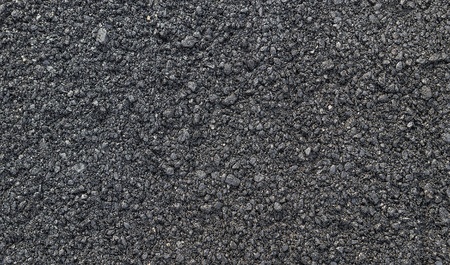Improve Residential Property Worth and Capability with Hot Mix Asphalt Paving Providers
Improve Residential Property Worth and Capability with Hot Mix Asphalt Paving Providers
Blog Article
Opening the Keys of Hot Mix Asphalt Technology
Checking out the midsts of warm mix asphalt modern technology reveals a globe where precise formulations and precise processes converge to shape our roads and infrastructure. The fusion of binders, fillers, and aggregates isn't simply a building task but a tactical orchestration of sturdiness and performance. As we peer right into the complex dance of elements, a tapestry of resilience and sustainability unfolds. Yet what exists underneath this surface of asphaltic mastery, and what keys wait to be introduced in the realm of paving technologies?
Relevance of Warm Mix Asphalt
Hot Mix Asphalt plays a vital duty in modern-day infrastructure advancement due to its longevity and cost-effectiveness. As the most commonly utilized paving product for roadways, freeways, and parking lots, Hot Mix Asphalt provides a variety of benefits that contribute to its significance in building jobs.
The longevity of Hot Mix Asphalt stems from its composition, that includes aggregates, binder, and filler materials that are carefully selected and blended to satisfy particular performance demands. This accurate combination results in a adaptable and solid sidewalk that can withstand frequent use without substantial deterioration. Additionally, Hot Mix Asphalt is 100% recyclable, additional enhancing its sustainability and environmental advantages. On the whole, the value of Hot Mix Asphalt in infrastructure growth can not be downplayed, as it continues to be a cornerstone of modern-day building practices.
Components of Asphalt Mixes
The make-up of asphalt mixes includes thoroughly picked aggregates, binder, and filler products that are important for achieving certain efficiency demands. Accumulations are the primary element of asphalt mixes, supplying stamina and stability. These accumulations can be all-natural, such as crushed rock or smashed stone, or synthetic, like recycled products from old pavements. The binder, typically asphalt or asphalt concrete, holds the aggregates with each other and supplies versatility and toughness to the mix. The choice of the binder is crucial as it directly affects the mix's efficiency in different climate condition. Fillers, such as moisturized lime or Portland cement, are utilized to boost the mix's workability and aging resistance. Angled Parking.
The mix and percentage of these parts play a significant role in identifying the high quality and performance of the asphalt mix. Engineers thoroughly develop the mix to satisfy certain demands, thinking about aspects like web traffic quantity, climate conditions, and pavement lifespan. Proper selection and harmonizing of accumulations, binder, and fillers are crucial for developing sturdy, durable asphalt sidewalks.
Mixing and Production Techniques

As soon as the accumulations are picked, the binder, often asphalt cement, is included in bind the materials together. The binder's quality and quantity considerably impact the mix's flexibility, resistance, and strength to ecological aspects. Furthermore, fillers like hydrated lime or Portland concrete might be integrated to improve particular qualities of the asphalt mix, such as its workability or moisture resistance.
During manufacturing, the accumulations and binder are heated go now up, generally between 250-325 ° F(121-163 ° C ), to facilitate blending and make certain correct finish of the aggregates. The mixing procedure needs to be complete to attain an uniform mixture that promotes the wanted performance qualities of the asphalt. Numerous strategies, such as set blending or drum blending, are employed to achieve high-grade and constant asphalt mixes for building and construction jobs.
Elements Influencing Asphalt Performance
Aspects affecting asphalt performance include an array of variables that influence the longevity, longevity, and general top quality of asphalt sidewalks. One key aspect is the top quality of products used in the asphalt mix.

Design considerations, such as pavement density and drain, are crucial in ensuring the long-term performance of the asphalt pavement. By thoroughly thinking about these designers, variables and contractors can maximize asphalt efficiency and improve the service life of pavements.
Lasting Practices in Asphalt Modern Technology

WMA enables for the manufacturing and placement of asphalt blends at lower temperature levels compared to standard hot-mix asphalt, resulting in reduced energy intake and greenhouse gas emissions. The use of permeable asphalt mixes can assist minimize stormwater overflow concerns by permitting water to infiltrate with the sidewalk and into the ground, promoting all-natural water filtration and recharge procedures.
Verdict
Finally, hot mix asphalt innovation plays a critical role in modern facilities advancement because of its durability and cost-effectiveness. By thoroughly balancing elements, utilizing appropriate mixing methods, and thinking about numerous variables, designers can develop top quality asphalt mixes that withstand rush hour tons and extreme weather condition conditions. Accepting sustainable methods, the original source such as using warm-mix technologies and recycled products, better boosts the ecological friendliness of asphalt technology.
Blending and manufacturing methods in hot mix asphalt technology entail the exact combination and processing of accumulations, binder, and fillers to produce a resilient and high-performance asphalt mix.Variables affecting asphalt performance incorporate a variety of variables that impact the durability, long life, and general high quality of asphalt pavements. Sustainable practices in asphalt technology incorporate different efforts intended at minimizing the environmental effect of asphalt manufacturing and paving procedures. By integrating reclaimed asphalt sidewalk (RAP) and recycled asphalt roof shingles (RAS) right into new asphalt blends, the market can significantly minimize the consumption of raw products and energy, while additionally decreasing land fill waste.
WMA allows for the manufacturing and placement of asphalt mixes at helpful hints reduced temperatures contrasted to traditional hot-mix asphalt, resulting in minimized energy usage and greenhouse gas emissions.
Report this page